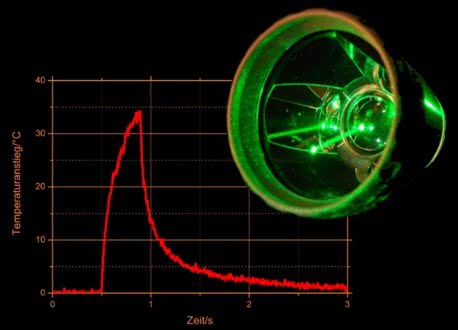Optical metrology
High-speed photography
At MLL, a camera system for high-speed photography is available. The photo shows the explosion of a damaged glass fiber tip (partial image 1) triggered by a high-intensity laser pulse. One recognizes the plasma lighting (partial image 2), the propagation of a shock wave (partial image 3) and the splintering off of glass fragments (partial image 4).


Ultra short pulse photography
By means of extremely short exposure time by flashes of light, the fastest movements can be recorded. The photo shows a laser-generated plasma in water (in the center), the shock wave generated by the rapid expansion (outside) and dark the subsequent cavitation bubble.
Photoacoustic spectroscopy
In photoacoustic spectroscopy, gases are excited by laser light. The absorption causes a slight increase in temperature, as a result of which the gas expands and thereby generates a pressure wave, which is measured acoustically. If one tunes the wavelength (spectroscopy) one can obtain a substance-specific signature of the sample. At MLL this is studied for respiratory gases to detect diseases such as lung cancer and tuberculosis early.

OCT based measurements
Besides tissue diagnostics, optical coherence tomography (OCT) can also be used to measure other specimen. For example, the surface of a body (image: coin) can be measured nanometer-accurate in fractions of a second without contact even at longer distances.
Optoacoustic temperature measurement
By means of optoacoustics, temperature increases can be measured in vivo. However, the technique can also be used to measure temperature changes in materials and cells that can not be contacted by a thermometer or thermocouple. The picture shows the temperature change on cells in the laboratory.

